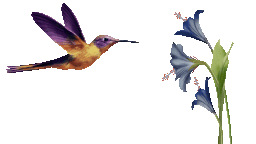Hello Hivers, and lovers of Feathered Friends!
Let's talk about one of the largest flying birds in existence, the Andean Condor, a species that is native to the American continent. Specifically from the Andean region of South America that extends from Argentina to Venezuela.
Unfortunately, it is a species in danger of extinction. In Venezuela, nowadays, there are no condors in their natural habitat. The few that exist are in captivity.
In my trip to Merida last April, one of the places we visited was the Condor Refuge in the Mifafi Valley. One of these days, I will tell you more about this visit, but today, I am going to focus in the big bird that lives in the refuge, Combatiente. He is one of the few remaining condors in captivity in the state of Merida in Venezuela. There are a few more in the city of Merida and from what I read in the news some efforts are being made to reproduce them and try to introduce them back into the Sierra de La Culata, their natural habitat in Venezuela. I hope they succeed but honestly I am not very optimistic. I've been traveling to Merida through all my adult life and the situation with the Condors in the Venezuelan Andes has not changed much.
But let me introduce you to this stunning bird for this week's #SMaP Free Theme.
There is not much documented information about the Condor in Mifafi, but rather word of mouth from the park rangers who take care of it and use to speak to the visitors. We were told that this condor is about 35 years old. Condors can live up to 85 years.
This is how the Condor greeted us when we approached for the first time.
This is the pic I chose for the #SMaP contest 👇
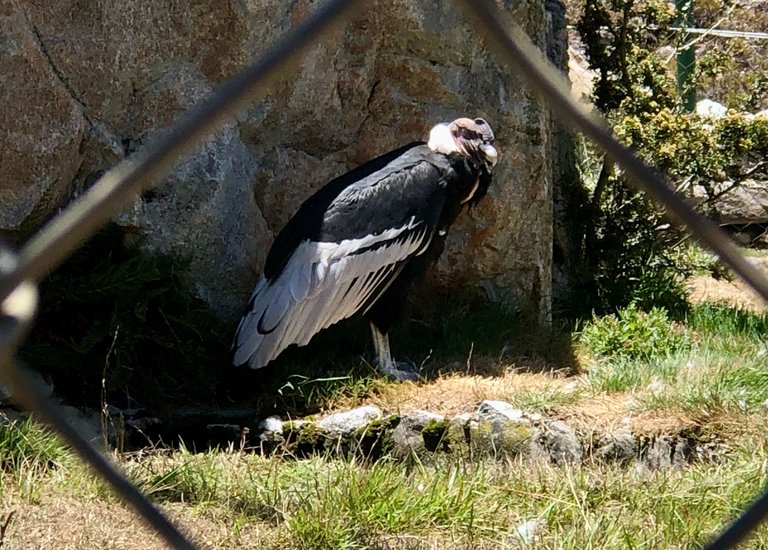
We were also told that this condor was rescued when he was very young and badly wounded. He was cared for and healed in captivity and hence his name “Combatiente” because he managed to survive.
After a short walk through the reserve, we went back to the big cage where the condor was and that time we could see him more closely.
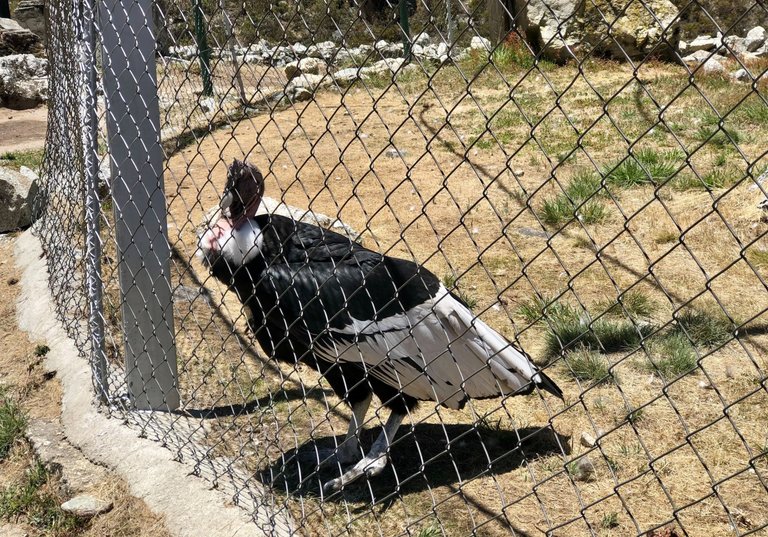

Apparently he was hungry. Condors are carrion animals that usually feed on dead animals.
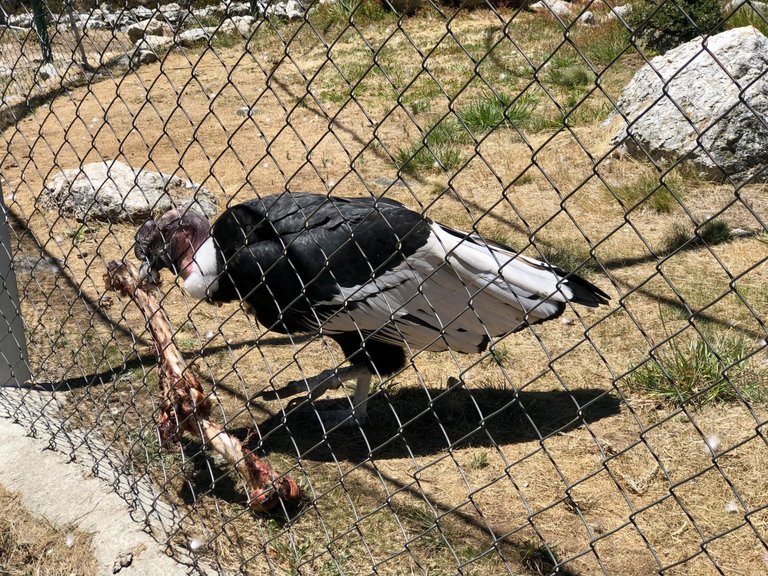
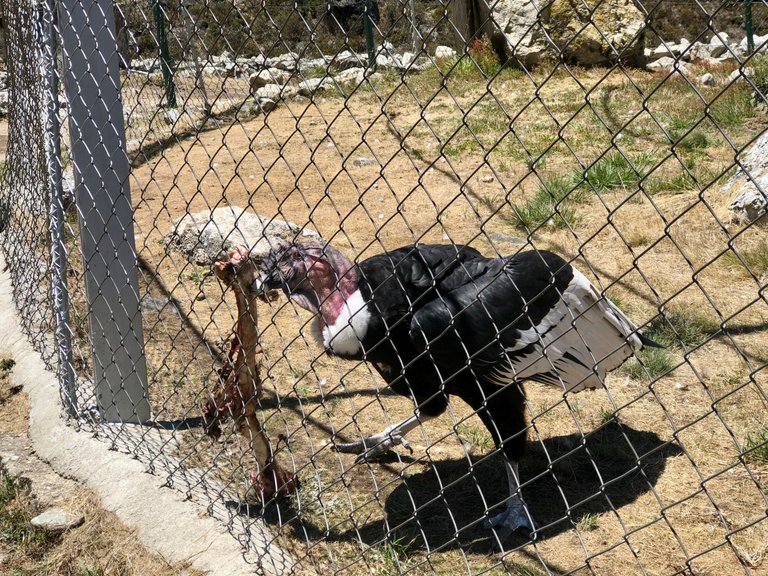
I would have loved to see him with his wings spread, but this was all he showed us.
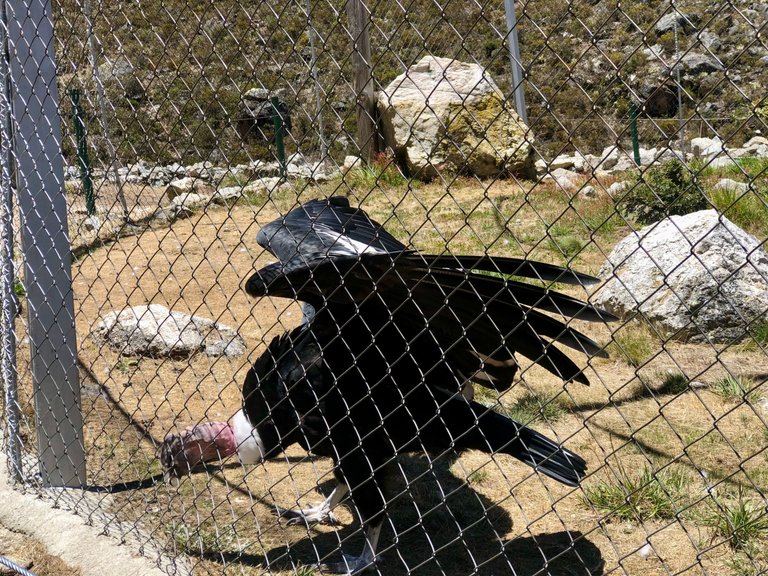
Other curious facts about condors is that they are monogamous. Males are larger than females. They can weigh up to 15 kilos. And they fly at great heights. They are the most emblematic bird of the Andean peaks.
I really hope something will be done to allow condors to fly again in freedom in the peaks of Merida.
Did you know about the existence of the Andean Condor and that it is one of the largest flying birds on the planet?
This is my entry in the Show Me A Photo Contest Round 221.
But wait, today is Tuesday. #ttt day at Hive so how could I not share a tune today. There is a beautiful song called El Condor Pasa is a very well known piece of Peruvian traditional music. It's from 1913 but over the years it has been covered many many times. One of the best known is the version by Simon and Garfunkel from 1970.
This version is the one I could find closest to the original version of the Peruvian composer Daniel Alomía Robles who composed the song for a zarzuela in 1913.
And this one is a version by Placido Domingo.
Have you heard this song before in any version?
Don't forget to stop by @ablaze's post with his recommendation for this week, the #210 of the initiative.
Thank you for reading!
And there is no intention of any copyright infringement.
If you're reading this and you are not on Hive yet, I invite you to join through my referral link. Let me know and I can delegate some resource credit to help you get started.


